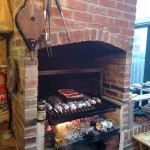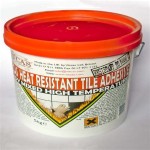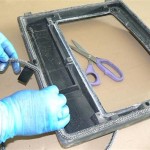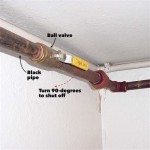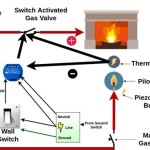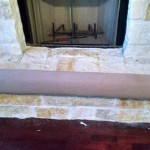Brick Fireplace Insert: A Comprehensive Guide
A brick fireplace insert is a self-contained heating appliance designed to be installed within an existing brick fireplace opening. It offers a more efficient and controllable source of heat compared to traditional open fireplaces, which often lose significant amounts of heat up the chimney. These inserts can utilize various fuel sources, including wood, gas, and electricity, each providing distinct advantages and considerations for homeowners.
The primary purpose of a brick fireplace insert is to transform a traditional, inefficient fireplace into a more effective heating solution. Open fireplaces are notoriously inefficient, with a significant portion of the heat generated escaping through the chimney. This can lead to higher energy bills and a limited ability to adequately heat a room. Inserts address this issue by creating a closed combustion system that directs heat into the room rather than allowing it to dissipate.
Several factors contribute to the efficiency gains offered by fireplace inserts. The closed combustion chamber allows for more complete burning of fuel, extracting more heat from the same amount of wood or gas. Inserts are typically constructed with insulated walls and a tight-fitting door, preventing heat loss through radiation and convection. Many models also incorporate blowers that circulate heated air throughout the room, further enhancing their heating capabilities.
The selection of a brick fireplace insert requires careful consideration of several parameters, including the size of the fireplace opening, the desired fuel type, and the heating requirements of the space. It's crucial to select an insert that is appropriately sized for the fireplace cavity to ensure proper installation and optimal performance. Overly large inserts can be difficult to install and may not fit correctly, while undersized inserts may not provide sufficient heating power.
Furthermore, adherence to safety regulations and building codes is paramount during the installation process. Professional installation is often recommended to ensure that the insert is properly connected to the chimney and that all safety requirements are met. Incorrect installation can lead to hazardous conditions, such as carbon monoxide leaks or chimney fires.
The aesthetics of a brick fireplace insert are also an important consideration for many homeowners. Inserts are available in a wide range of styles and finishes, allowing for seamless integration with the existing decor of the room. Some models feature decorative surrounds and glass doors that enhance the visual appeal of the fireplace. The ability to customize the appearance of the insert ensures that it complements the overall aesthetic of the living space.
The operation and maintenance of a brick fireplace insert are relatively straightforward. Regular cleaning of the insert and the chimney is essential to maintain optimal performance and prevent potential hazards. Wood-burning inserts require regular ash removal, while gas inserts may require periodic cleaning of the burner components. Following the manufacturer's instructions for operation and maintenance is crucial to ensure the longevity and safe operation of the appliance.
The environmental impact of brick fireplace inserts varies depending on the fuel type. Wood-burning inserts can contribute to air pollution if not operated properly or if using unseasoned wood. Gas inserts typically produce fewer emissions and offer a more environmentally friendly alternative. Electric inserts produce no direct emissions at the source but may contribute to emissions at the power plant.
Fuel Type Considerations
The selection of fuel type is a critical decision when choosing a brick fireplace insert. Each fuel type offers distinct advantages and disadvantages in terms of efficiency, cost, and environmental impact.
Wood-Burning Inserts: Wood-burning inserts are a popular choice for homeowners seeking a traditional fireplace experience. They provide a natural, radiant heat and a visually appealing flame. However, wood-burning inserts also require a significant amount of maintenance, including wood storage, ash removal, and chimney cleaning. The efficiency of wood-burning inserts can vary depending on the type of wood used and the combustion technology employed. Seasoned hardwood is the most efficient fuel source, while unseasoned wood can produce excessive smoke and creosote buildup in the chimney.
Gas Inserts: Gas inserts offer a convenient and efficient alternative to wood-burning inserts. They are easy to operate, require minimal maintenance, and provide consistent heat output. Gas inserts can be fueled by natural gas or propane, depending on the availability of a gas line. They typically feature a realistic flame appearance and can be controlled with a thermostat for precise temperature regulation. Gas inserts are generally more expensive than wood-burning inserts, but they offer lower operating costs due to the higher efficiency of gas combustion.
Electric Inserts: Electric inserts are the simplest and most convenient type of fireplace insert. They require no venting or fuel storage and can be easily installed in any room with an electrical outlet. Electric inserts produce heat using electric resistance coils and typically feature a realistic flame effect. While electric inserts are relatively inexpensive to purchase, they can be more expensive to operate than gas or wood-burning inserts due to the higher cost of electricity. They are often used as supplemental heating sources in rooms where additional warmth is desired.
Installation Procedures and Safety Measures
Proper installation of a brick fireplace insert is essential for ensuring safe and efficient operation. Incorrect installation can lead to hazardous conditions, such as carbon monoxide leaks, chimney fires, or reduced heating performance. Professional installation is often recommended, although experienced homeowners may be able to perform the installation themselves, provided they adhere to all applicable building codes and safety regulations.
Before installing a fireplace insert, it's crucial to inspect the existing fireplace and chimney for any signs of damage or deterioration. The chimney must be clean and structurally sound to ensure proper venting of combustion gases. Any cracks or leaks in the chimney should be repaired before installing the insert. The fireplace opening must also be properly sized to accommodate the insert. Measure the height, width, and depth of the fireplace opening to ensure that the insert fits correctly.
The installation process typically involves inserting the insert into the fireplace opening and connecting it to the chimney. A chimney liner is often required to ensure proper venting of combustion gases. The liner should be made of stainless steel or other heat-resistant material and should be properly sized for the insert. The insert should be securely attached to the fireplace using appropriate fasteners. Any gaps or openings around the insert should be sealed to prevent heat loss and air infiltration.
After installation, it's essential to test the insert to ensure that it is operating correctly. Check for any leaks or malfunctions and verify that the venting system is functioning properly. A carbon monoxide detector should be installed in the room where the insert is located to provide an early warning of any potential leaks. Regular maintenance, including chimney cleaning and inspection, is crucial for maintaining the safe and efficient operation of the fireplace insert.
Cost Analysis and Return on Investment
The cost of a brick fireplace insert can vary depending on several factors, including the fuel type, size, features, and brand. Wood-burning inserts are typically the least expensive to purchase, while gas inserts tend to be the most expensive. Electric inserts fall somewhere in between.
In addition to the purchase price, there are also installation costs to consider. Professional installation can add several hundred dollars to the overall cost. However, it's often worth the investment to ensure that the insert is installed correctly and safely.
The operating costs of a fireplace insert depend on the fuel type and usage patterns. Wood-burning inserts require the purchase of firewood, while gas inserts require the consumption of natural gas or propane. Electric inserts consume electricity. The cost of each fuel source can vary depending on location and market conditions.
The return on investment for a brick fireplace insert can be significant, particularly for homeowners who use it as a primary heating source. Inserts can significantly reduce heating bills by providing a more efficient and controllable source of heat compared to traditional fireplaces. They can also increase the value of a home by adding a desirable feature that enhances comfort and energy efficiency.
To calculate the return on investment, it's necessary to compare the cost of the insert and installation with the potential savings on heating bills. The payback period will depend on the usage patterns, fuel costs, and the efficiency of the insert. In some cases, the payback period can be as short as a few years.
Furthermore, consider the non-monetary benefits of a fireplace insert, such as the ambiance and comfort it provides. These benefits can enhance the quality of life and make the investment even more worthwhile. The ability to enjoy a warm and inviting fire on a cold winter evening is a valuable asset that cannot be easily quantified.

What Kind Of Benefits Can A Fireplace Insert Provide

Fireplace Inserts Gas Wood And Electric Hvacdirect Com

Best Fireplace Inserts In 2024

How To Update Brass Fireplace Insert With Spray Paint Iekel Road Home

Fireplace Inserts Everything You Need To Know Full Service Chimney

Wood Inserts Osburn

How Fireplace Inserts Work We Love Fire

Are Fireplace Inserts Worth It We Love Fire

Fireplace Inserts And Chimney Authority

Features Comes With Remote Control Realistic Simulated Flames Logs Set And Brickwall Fla Farmhouse Fireplace Electric Remodel

